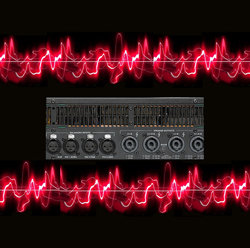
Four 8-ohm loudspeakers combined in parallel might be 1.5 ohms at that frequency, which is almost a short-circuit across the amp! The result is overheating and possible failure. That’s one reason not to apply a 2-ohm load.
Also, loudspeakers are reactive loads, not just resistive. They have inductance and capacitance. That makes some loudspeaker loads especially difficult to drive, causing more heat in the power amp. Top-quality amplifiers can drive these “difficult” loads with less distortion than lesser amps.
Running an amplifier into a low-impedance load makes the amp run hotter because low-Z loads draw more current. More current causes more heat dissipation in the amp’s devices. High heat tends to destroy transistors and should be avoided.
Because 2-ohm loads draw a lot of current through the loudspeaker cables, more power is lost by heating those cables than if you used a 4-ohm load. A 2-ohm load requires very thick loudspeaker cables to prevent losing power via cable heating.
What’s more, a 2-ohm load reduces damping factor compared to a 4-ohm load, so the bass and kick drum may sound less tight. That’s because damping factor = load impedance divided by amplifier output impedance. As the load impedance decreases, so does the damping factor.
Even if a power amp is claimed to drive a 2-ohm load at high power, I don’t recommend using a lot of loudspeakers to take advantage of that power.
Instead, consider a 2-ohm rating as the ability to handle 4-ohm loudspeakers whose impedance might dip to 2 ohms at certain frequencies. If you need more power, I suggest getting a second amp and more loudspeakers, which will also provide redundancy.
Bridging Power Amps
One way to get more power from an amp is to run it in bridge-mono mode. When you bridge a stereo power amp, you wire the load across the amp terminals in such a way to get more power than the two channels combined.
For example, a 200-watt stereo amp might produce 600 watts mono when bridged. Note that bridging is not the same as bi-amping.
Caution: Make sure the amp’s data sheet says that the unit can be run in bridge mono mode. If not, you may damage the amplifier. Some amps require a switch to be set to bridge mode before you apply power.
To bridge a stereo amp, enable its bridge-mono switch and connect one loudspeaker across the two red terminals of the two channels.
Figure 2 shows how to do it. The 2-channel signals are opposite in polarity in bridge-mono mode, and so the total voltage across the loudspeaker is twice the voltage of a single channel.
.
In bridge mode, one red terminal becomes the positive polarity signal, and the other red terminal becomes the negative polarity signal. The manufacturer’s manual tells which terminal is which.
A bridged amp provides double the voltage of a single channel. That double voltage forces twice the current through the load.
So in theory, with 2X voltage and 2X current, you get 4X the power in bridge mode compared to a single channel in stereo mode.

